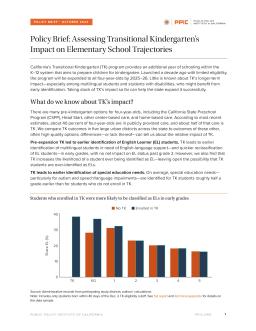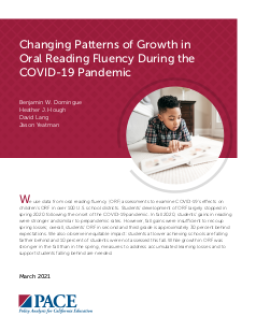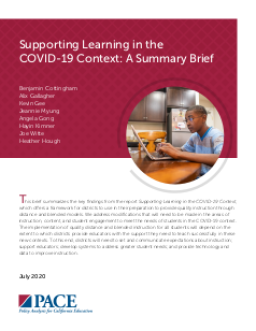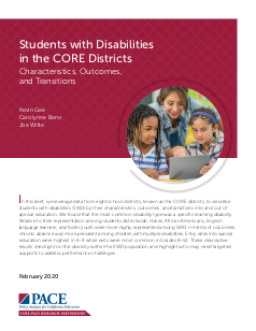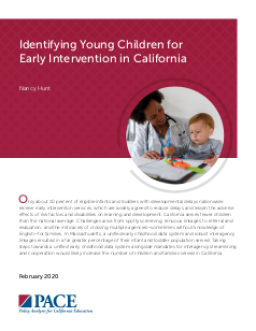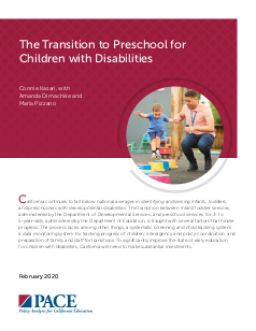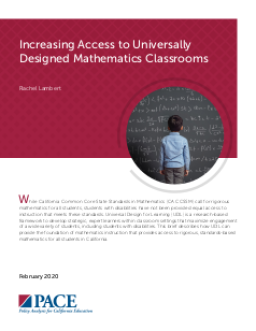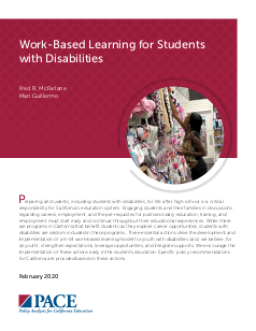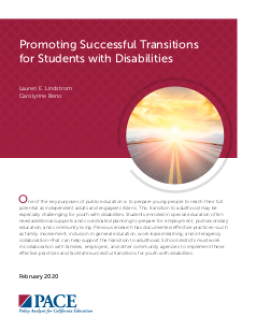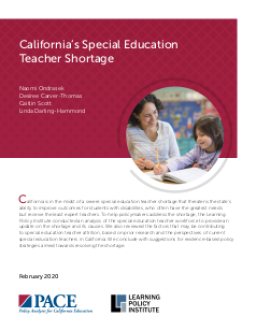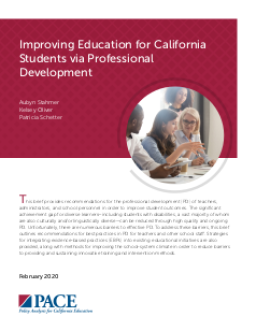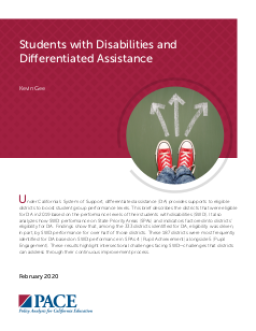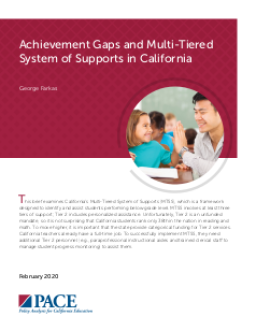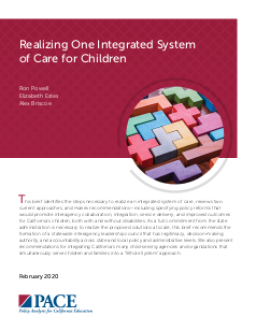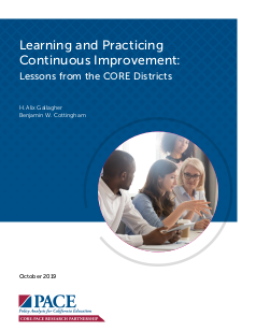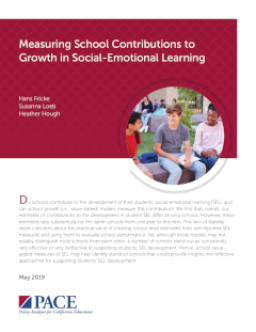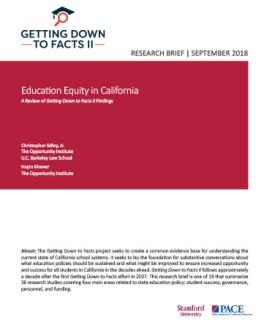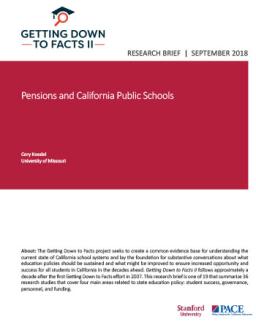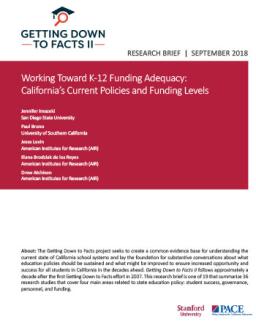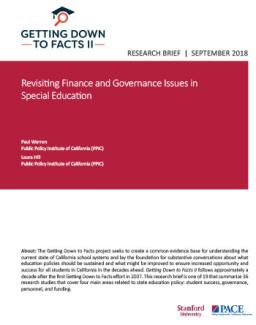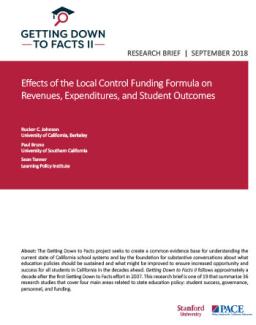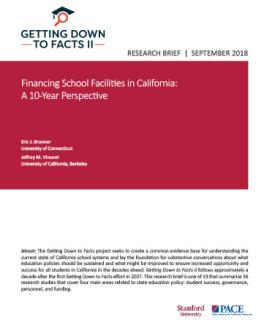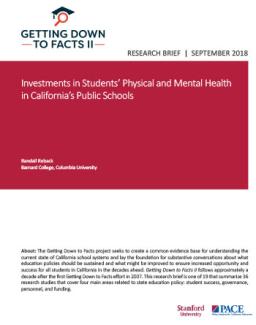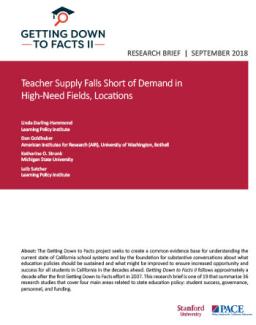Summary
Summary
The COVID-19 pandemic had a significant negative effect on the oral reading fluency (ORF) of US students in grades 2-3 in over 100 school districts, with students falling 30% behind expectations. While there was some recovery in the fall, it was insufficient to make up for the spring losses. The impact is particularly inequitable, with lower achieving schools being hit harder, and 10% of students not being assessed. Addressing accumulated learning losses and supporting struggling students is necessary.
Summary
This suite of publications provides 10 recommendations based on the PACE report to help educators and district leaders provide high-quality instruction through distance and blended learning models in the 2020-21 school year. Despite the challenges of COVID-19, research can guide decisions about student learning and engagement. These recommendations can be used as a framework to prioritize quality instruction.
Summary
The CORE districts studied characteristics, outcomes, and transitions of students with disabilities (SWDs). Specific learning disability was the most common type. Males, African Americans, English learners, and foster youth were overrepresented. Chronic absence was higher for SWDs with multiple disabilities. Most SWDs entered special education in K-4 and exited in grades 8-12. These results help identify who may need targeted support.
Summary
Only 10% of eligible infants and toddlers with developmental delays nationwide receive early intervention services, and CA serves fewer children than the national average. This is due to challenges such as spotty screening, tenuous linkages to referral and evaluation, and crossing multiple agencies. Massachusetts has a unified early childhood data system and robust interagency linkages, resulting in a greater percentage of their infant and toddler population served. Implementing a unified data system and interagency streamlining in CA could increase the number of children and families served.
Summary
California is failing to identify and serve infants, toddlers, and preschoolers with developmental disabilities compared to national averages. The transition from infant/toddler services to preschool services is hindered by various factors such as the lack of a systematic screening and child tracking system, interagency coordination, and family/staff preparation for transitions. Significant investments are required to improve the state of early education for children with disabilities in California.
Summary
This brief explains that while the California Common Core State Standards in Mathematics require rigorous instruction for all students, those with disabilities do not always have equal access to this instruction. It recommends the use of Universal Design for Learning (UDL), a research-based framework that enables expert learners within classroom settings and maximizes engagement for all students, including those with disabilities, to provide access to rigorous, standards-based mathematics instruction for all students in California.
Summary
Students with disabilities should be included in programs that prepare them for life after high school. This can be achieved through a K-14 work-based learning model, which involves strengthening expectations, leveraging opportunities, and integrating supports. Early implementation of these actions is encouraged, along with specific policy recommendations for California.
Summary
Summary
Summary
Summary
Summary
Summary
Summary
This report examines how California's education sector is embracing continuous improvement over standards-based reform. The study presents six lessons learned from PACE and CORE Districts' collaboration on the topic, including the complexity of embedding continuous improvement processes into school norms and the need for deliberate steps to build a culture conducive to continuous improvement. The report provides implications for broader continuous work in California and beyond, with three case studies providing more detail on exemplary practices in two districts and one school.
Summary
This report examines the stability of school effects on social-emotional learning (SEL) over two years in California's CORE districts. The correlations among school effects in the same grades across different years are positive but lower than those for math and ELA. While these effects measure real contributions to SEL, their low stability draws into question whether including them in school performance frameworks and systems would be beneficial.
Summary
This brief analyzes the 2018 update of the California School Dashboard, examining improvements and areas for continued enhancement. Using data from the 2019 PACE/USC Rossier poll, the author characterizes use of and support for the Dashboard, finding low use, equity gaps, but high support and preference for the new Dashboard.
Summary
Getting Down to Facts II reveals California's limited progress in reducing achievement and opportunity gaps for Black, Latino, low-income, and/or English language learners. The state's education reforms have relied on good intentions rather than specific accountability and enforcement, resulting in below national average outcomes. This paper examines equity in teaching, learning, finance, and accountability and concludes with a broader conception of equity for the future, whole child equity, to tackle this nearly intractable problem.
Summary
The California State Teachers’ Retirement System (CalSTRS) has amassed a $107 billion "debt" due to the accrual of pension liabilities. CalSTRS contributions are legislated to nearly double by 2021. The higher rates are required through 2046, requiring significant contributions from teachers, school districts, and the state government. Solutions involve reducing benefits, increasing contribution rates, or modifying the underlying benefit structure. California could consider reforms from other states to develop its own policy response.
Summary
California's education system aims to provide all public school students with a broad course of study consistent with state standards. However, many educators feel that the state's funding system does not provide adequate resources to meet these expectations. While funding levels have improved, they remain below those of many other states. An adequacy study estimated that providing an adequate education would have required California to spend $25.6B more in 2016-17. The study also found that larger gaps between actual spending and adequate costs were associated with lower student performance.
Summary
California's Local Control Funding Formula highlights low performance of special education students. Many districts allocate more base funding for all students into special education. A study found state funding growth has not kept pace with district costs, and the current formula inadequately funds preschool programs for infants and toddlers with disabilities. The study suggests better alignment between special education and the LCFF, and improved governance and accountability structures.
Summary
California's Local Control Funding Formula (LCFF) has increased per-pupil revenues, especially for low-income districts, and provided more flexibility in expenditures, leading to improvements in student outcomes. The funding was distributed based on the proportion of disadvantaged students, and expenditure increases were primarily allocated to teachers, pensions, and special education. The policy was implemented during a time of increased K-12 funding after the Great Recession and existing revenue distribution patterns.
Summary
California's public school system has a vast inventory of buildings and properties, but many are in poor condition. The state's current school facilities funding system is criticized for not targeting aid towards districts with the greatest facility needs, resulting in a relatively regressive finance system. Local sources of funding greatly outstrip state support, and charter school facility funding continues to expand.
Summary
Children's health, especially in low-income households, affects their future success. California has improved access to healthcare but still has gaps due to poor quality care and lack of access to providers. Mental health is a growing concern, but the state has fewer services in schools than other states. The brief explores the benefits of school-based health services, which are currently lacking in California, and estimates it would cost less than $100 per pupil to improve access. California is missing out on federal funds due to its low spending on Medicaid for school-based health services.
Summary
California's teacher shortage is severe, affecting high-needs students and certain subjects such as math, science, special education, and bilingual education. Factors driving the shortage include new demands for teachers, declining enrollment in teacher preparation programs, and teacher attrition. Schools are hiring teachers lacking standard credentials and formal training. Unequal teacher distribution's impact is hard to assess due to data limitations. The shortage threatens California's education initiatives.
